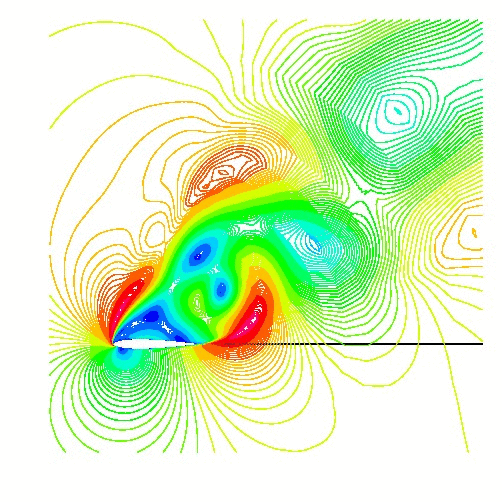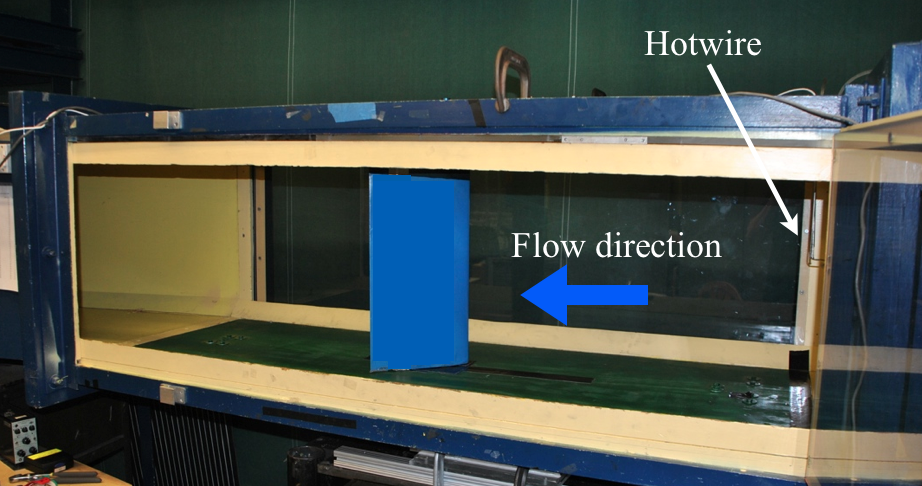Vortex-Induced Vibration and Frequency Lock-in of an Airfoil at High Angles of Attack
Background

Fluid flow behind bluff bodies and airfoils at high angles of attack undergoes interesting patterns of vortex formation and shedding. These vortices create an unsteady periodic force on the structure, leading to structural vibrations. These vortex-induced vibrations can become dangerous when, under the right circumstances, the vortex shedding frequency “locks-in” with the natural frequency of the structure, leading to excessive fatigue and possibly failure of the structure.
This potential danger makes this phenomenon a great concern in many application areas, including wings, tall buildings, and turbomachinery. Due to the complex nature of these large scale applications, current CFD simulations are not able to efficiently predict in what conditions this lock in phenomenon will occur. The goal is to determine a way to predict these NSV conditions early in the design process.
About this Project
This research seeks to validate the use of our frequency domain, harmonic balance (HB) CFD solver as a potential tool for the prediction of the conditions in which lock-in phenomenon will occur. In this study, the HB CFD solver is applied to the problem of an NACA0012 airfoil in deep stall and the numerical results are compared with experimental data. The HB CFD solver is used to predict the natural shedding frequency of the vortices for a fixed airfoil at a range of high angles of attack and flow speeds, and to identify the lock-in region for an airfoil in forced oscillation.
Experimental tests are conducted in Duke University’s low speed wind tunnel. The natural shedding frequency is measured for a stationary airfoil at various angles of attacks and flow speeds using a hotwire upstream and 20 pressure transduceras along the midspan. These pressure readings are measured for a total of four seconds, sampled around 256 Hz. First, the airfoil will be stationary for baseline measurements. Finally, the airfoil is allowed to oscillate freely within a set range, in order for a lock-in region to develop.

Results and Conclusions
The HB CFD predictions and the experimental data show fairly good agreement for natural shedding frequency measurements of the fixed airfoil. For the oscillating airfoil, the CFD results show a narrower lock-in region than the experimental data, which can be attributed to the chaotic behavior of the vortex patterns on the edges of the lock-in region. Experimentally, further work will be done to precisely identify the lock-in region and allow better comparison with the HB CFD predictions.